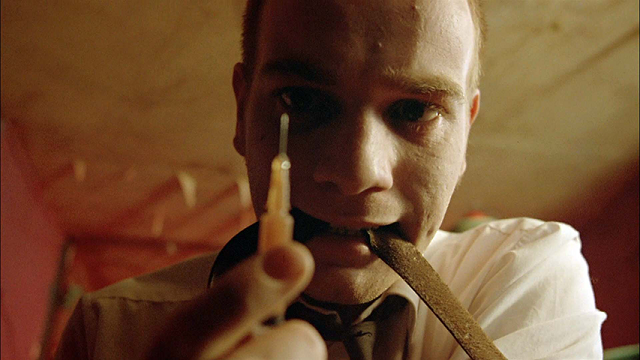I have a friend that I am compelled to call from time to time—just to hear her voice.
The moments when she is affable and engaging inspire me to follow my giddy heart and set up dinner plans, or a weekend together. Plans are always made—but invariably fail to materialize.
There is just as much chance that calling her will result in a somnolent trailing off of every other sentence, induced primarily by heroin, that leaves me feeling like I shouldn’t call for a while.
Finally, there are the other times: the days she is crying hysterically because she is being threatened by a vindictive ex-boyfriend who wants to take her to Family Court and fight for custodial rights; when Child Protective Services want to investigate her living situation and obtain a urine sample, and those times when she’s convinced that her other ex-boyfriend is turning her eight-year-old son against her.
These phone calls affect me so negatively because I know, in the truest and deepest recesses of my heart, that all of this negativity and drama in her life is a direct result of her substance abuse issues and can be alleviated—perhaps eradicated—if she were able to get clean. I also have more than enough empathy to refrain from proselytizing or trying to shove recovery down her throat.
To attempt it would jeopardize our friendship—but to be silent can be heartbreaking sometimes.
“Why does this kind of crap keep happening to me?” she’ll ask, almost rhetorically, through tears. I could almost burst into flames as I reluctantly sit in silence on the other end of the phone.
You cannot scroll through your Facebook newsfeed these days without seeing an article or a video about the current heroin epidemic. There was the well-known case of the overdosed and unconscious parents with their angry five-year-old in the child seat—the local police snapping shots of the parents with their iPhones and posting them on social media before administering the Naloxone to save their lives.
The parents in question, of course, were subsequently arrested for child abuse and narcotic possession. There was the public service announcement from the Lake County, Florida sheriff’s department where their task force dressed up as terrorists with their faces covered in black masks as the head of the department, in his best southern drawl, threatened the local population of heroin dealers: “Enjoy trying to sleep at night, wondering if tonight’s the night our SWAT team blows your door off it’s hinges…”
Every major periodical in the United States has run a cover story on this epidemic. National Public Radio, podcasts, documentaries, and news shows are all covering it. Everyone seems to have their take on how to solve the issue too. A quick glance at the letters to the editor of one magazine illustrates this clearly.
There was one letter from a woman claiming it was all about semantics and how we refer to the victims of this plague. They have “substance-use disorder,” they are not drug addicts. One doctor from Baltimore writes that the only way to handle this effectively is to keep those affected on long term methadone or suboxone treatment. Then, there’s yet another letter that explains that it is really a political failure—our new conservative administration leaving these poor people without the proper resources to address the issue realistically.
Heroin addiction is tricky stuff and it seems that everyone has an opinion about how to wipe out this affliction. But, what most of these well-meaning experts keep missing with their theories and editorials, is that at the heart of it are the people who are addicted. Real live people. This is not some nebulous population that we can honestly refer to with the distance of educated expertise.
Now, the disease model of drug addiction and alcoholism has been accepted by the American Medical Association for over 60 years, and for all intents and purposes, it fits. Addiction is progressive, fatal, and characterized by altered brain function. But what this definition lacks is the glaring difference between someone with substance abuse issues and someone with, say, non-Hodgkins Lymphoma.
There’s never going to be a situation where a doctor will approach a cancer patient with a course of treatment and be met with hesitation because the person enjoys the cancer. There’s never going to be the issue of the patient being seduced by, not only the cancer, but the cancer lifestyle.
A lot of doctors and bystanders forget that many of those who abuse narcotics are not even remotely interested in stopping, and even when the subject is broached as the person’s life is clearly spinning out of control, it’s mostly met with a sense of hesitation or defensiveness.
Getting clean, unfortunately, is not something that can be foisted on one person by another in the form of lectures, jail sentences, guilt trips, threats, and warnings. Getting clean and getting sober is a process that always requires an awakening of the spirit and an incredible amount of resolve. It has been my experience, that unless a person has hit a real serious bottom and reached a point where they want to be clean worse than they’ve ever wanted anything in their
life before, it’s not going to happen.
I mean, think about it for a second. The physiological change that takes place in the brain once heroin addiction has been introduced is so strong, it’d be terribly naive to think that anyone is going to overcome something of this magnitude because they kind of think they “should,” or that it’d be advisable. These poor souls need to arrive at this spiritual awakening all on their own, and unfortunately, this precludes the issue from being anything that “society” can do for the addict.
Like most spiritual maladies, this straddles all socio-economic fences. This is not something relegated to just poor people. So many people from all walks of life grow up with feelings of inadequacy, low self-esteem, low-grade depression, and childhood trauma, that the allure of any narcotic is obvious. For many people the introduction of these types of drugs offer the first release they’ve ever felt from these existential barriers.
This really brings us right back to why many addicts cannot be threatened into recovery. You cannot argue that they are choosing a lower quality of life when many of them have only just started to feel a sense of relief after lifelong malaise. This is also why the reality of possible death by overdose doesn’t seem to sink in. If you are a person who feels ambivalent about your own survival—which a lot of addicts do—you are essentially at an impasse when you are trying to argue about the wisdom of sobriety.
Of course, it is making the public feel helpless when their cousins, nephews, sons, and daughters are dying in droves from this affliction, and because of this people need to feel as though real steps are being taken to fight this terrible monster.
Unfortunately, there is only so much that we as a society can do to eliminate this problem. Court mandated rehabs, long term treatment centers, and counseling can be helpful—to a degree. But, many times, when you are forcing people by law to attend group therapy and test regularly for relapses, you get a resentful population that becomes more and more creative about how to game the system.
What I love about fellowships like Narcotics Anonymous is that it was designed by addicts for addicts. Everyone in the room knows exactly what you are going through and when the addict is ready to recover, there is an unlimited amount of support and help. There is sponsorship and friendship with people who came through the door just like the newcomer and are now enjoying various degrees of success with navigating life.
Usually success that alluded them from even before their active addiction. As I stated, no one can lead a person into a spiritual awakening, but those meetings are a great place to have one.
And, even when people come in with the slightest flicker of hope, the love and social connection will help fan the flames of desire and sometimes build up enough momentum to reach the level of dedication required to enact such a drastic change. I don’t think this degree of inspiration can be found in a long-term treatment center run by the state.
Conclusively—well, I guess the point is that there is no neat and tidy conclusion. It’s a very Western idea to need resolution when it comes to almost everything, and especially something as painful and vexing as this subject.
But, in the case of the heroin epidemic, it’s messy and it’s chaotic and even after an addict overdoses and dies, the neat and tidy ending still eludes us—the ones left behind.
~
Author: Billy Manas
Image: Imdb
Editor: Lieselle Davidson
Copy Editor: Emily Bartran
Social Editor: Leah Sugerman
 Share on bsky
Share on bsky






Read 2 comments and reply